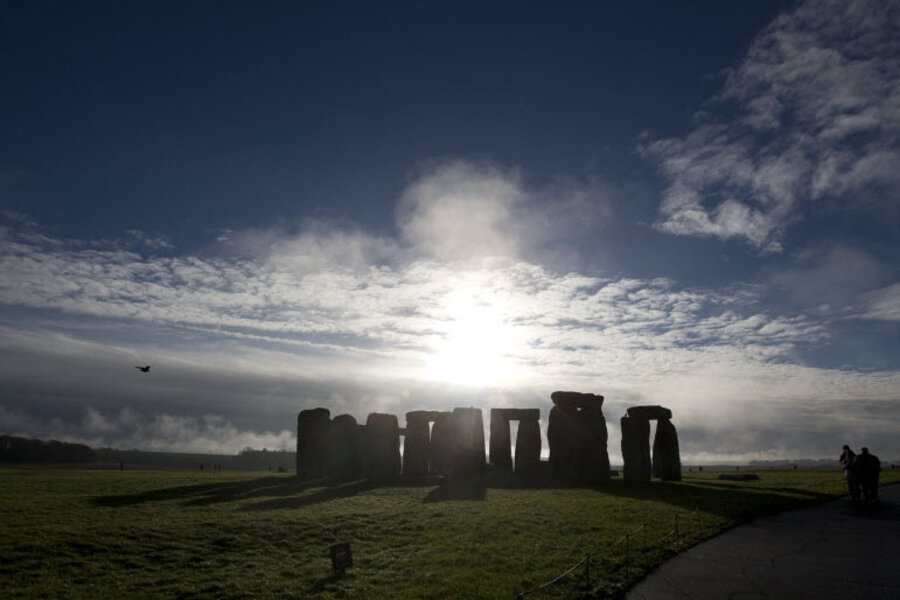There's an older, bigger Stonehenge in town. What will it tell us?
Loading...
Every year, nearly 1 million people flock to England to catch a glimpse of the mysterious stone monuments of Stonehenge. Now, it seems they may have been traipsing across the tops of an even bigger, older stone formation.
Researchers at the Stonehenge Hidden Landscapes Project have discovered evidence of another major prehistoric monument just 2 miles away from the famed attraction. Data gathered by remote sensors used to scan for underground anomalies suggests that as many as 100 stones lie beneath Durrington Walls, the location of a former Neolithic settlement. The new site could offer further clues into the lifestyles and religious practices of Neolithic humans.
The scale of the monument, about a third of a mile, makes it one of the largest found in Europe. It is also larger than a previous monument found in Israel, which was thought to have been dedicated to a Mesopotamian moon god named Sin.
University of Bradford researchers said Monday the monument is thought to have been built around 4,500 years ago. Some of these stones, according to the archaeologists, are 15 feet long and have been buried about 3 feet below the surface of the earth.
Vince Gaffney, professor of archeology at Bradford and director of the Hidden Landscapes project, describes the scale of Durrington Walls as “extraordinary.” He told the Times of London. “These things are theatrical. They’re designed to impress and impose; to give the idea of authority to the living and the dead. It really does create a massive impression, and was clearly important enough to have been drawn into the developing landscape.”
The new monument could also reveal more about Stonehenge, already established as a major ritual site in its own right. As Vince Gaffney articulated in a previous interview with LiveScience, “[Stonehenge was] part of a much more complex landscape with processional and ritual activities that go around it. That's very different from how this has been viewed before. The important point is Stonehenge is not alone. There was lots of other associated ritual activity going on around it."
Recent archeological findings at Stonehenge itself have exposed smaller monuments with a circular design buried beneath the larger one, similar to the findings at Durrington Walls.
This report contains material from the Associated Press.







